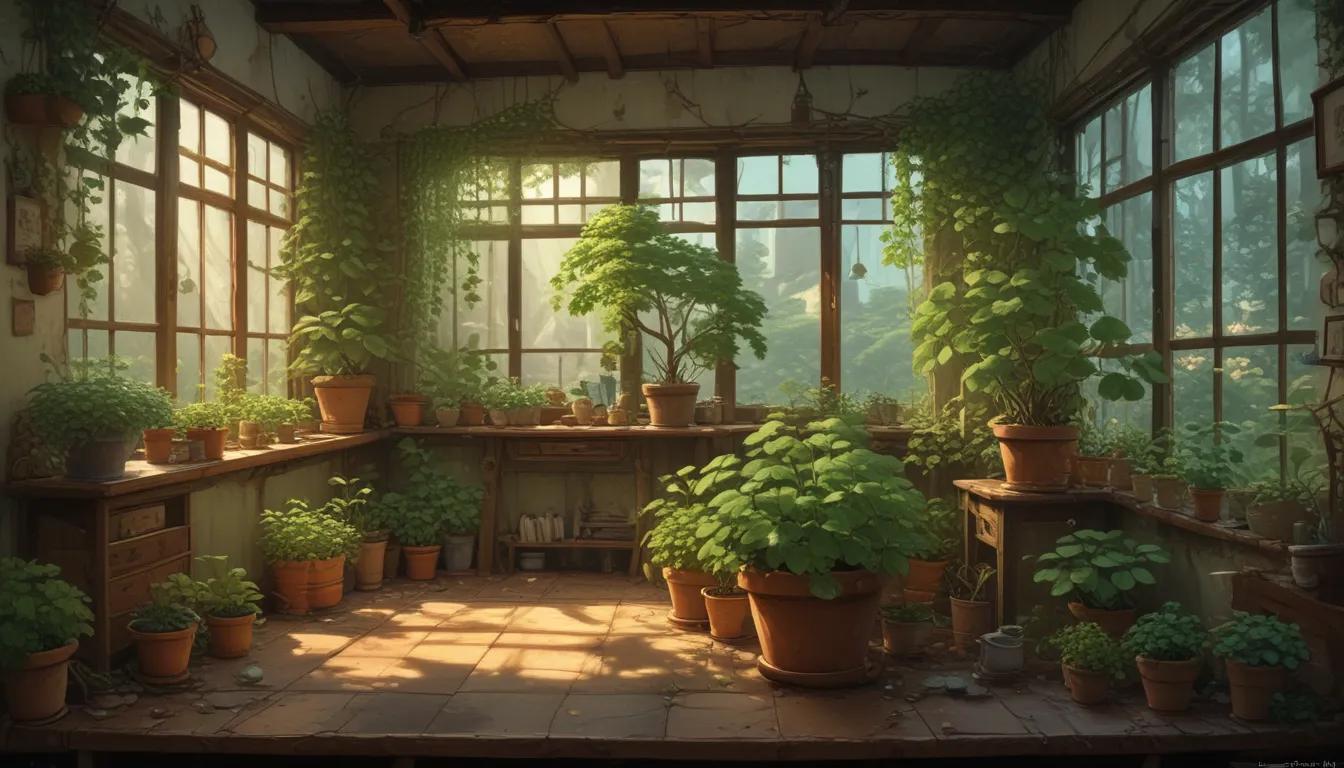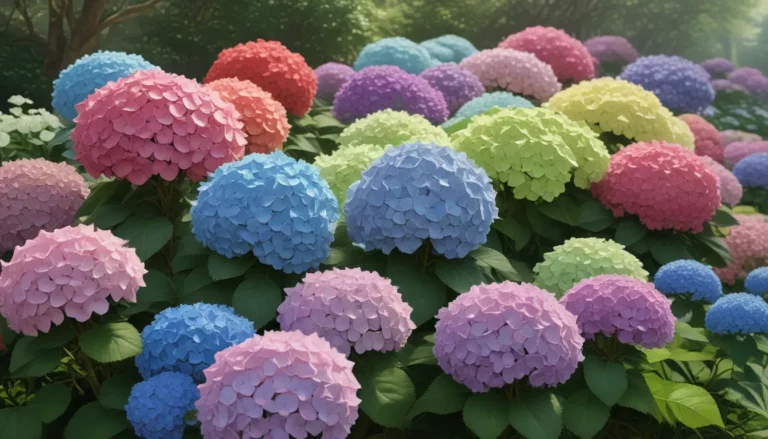The Ultimate Guide to Growing and Caring for Shamrock Plants Indoors

Shamrocks, often associated with Ireland and luck, are vibrant and easy-to-care-for houseplants that can bring a touch of greenery to your home. Despite their popularity during St. Patrick’s Day, these plants, belonging to the Oxalis genus, are not real clover and have a fascinating history and diverse species to explore.
If you’re looking to enhance your indoor garden with these charming plants, you’ve come to the right place. In this comprehensive guide, we’ll delve into everything you need to know about cultivating and maintaining shamrocks indoors. From their cultivation and history to propagation, growing tips, maintenance, species selection, and pest management, we’ve got you covered. So, grab your gardening gloves and let’s dive in!
What You’ll Learn
Here’s a sneak peek into what we’ll cover in this shamrock care guide:
- Cultivation and History
- Propagation
- How to Grow
- Growing Tips
- Maintenance
- Species, Varieties, and Cultivars to Select
- Managing Pests and Disease
- Quick Reference Growing Guide
Now, let’s start with a bit of background.
Cultivation and History
Shamrocks, meaning “little clover” in Irish, are often mistakenly associated with Ireland and St. Patrick. However, these charming plants actually belong to the Oxalis genus, not the clover family. While their connection to Ireland might be a bit of folklore, shamrocks have captivating flowers and foliage, making them a delightful addition to any indoor garden.
Oxalis plants boast unique three-lobed leaflets, similar to clover, with some varieties standing out due to angular or heart-shaped leaves. Notable species within the Oxalis genus include O. stricta and O. corniculata, commonly found in the wild. However, the shamrocks you’ll find in nurseries are typically Oxalis species with green, purple, or variegated foliage, such as O. triangularis, O. regnellii, and O. tetraphylla.
Despite their enchanting appearance, it’s important to note that Oxalis plants, like most species in the genus, contain oxalic acid, which can be toxic if ingested. So, remember to keep them away from children and pets for safety.
Propagation
Shamrocks do not produce viable seeds, making propagation a bit unique. You can propagate these plants through division, where you separate tubers from an existing plant or purchase potted specimens from a nursery. Here’s a quick overview of the propagation process:
By Division
- Choose a well-draining, six-inch container and fill it with potting soil.
- Unpot the plant, tease out a tuber with roots attached, and plant it at a shallow depth in the center of the pot.
- Place the pot in a bright, indirect sunlight spot for optimal growth.
Transplanting is another propagation method that involves moving a nursery plant to a decorative pot, ensuring proper soil, and maintaining the ideal growing conditions for your shamrock.
How to Grow
To ensure your shamrocks thrive indoors, it’s crucial to provide them with bright, indirect sunlight, well-draining potting soil, and the right watering and fertilizing routine. Additionally, maintaining a moderate temperature range and allowing for seasonal dormancy will keep your plants healthy and vibrant. Here are some growing tips to help you cultivate robust shamrocks:
- Choose a porous, well-draining pot for optimal root health.
- Water your plant when the soil surface feels dry, avoiding extreme wetness or dryness.
- Fertilize monthly during the growing season, adjusting the frequency during flowering periods.
- Allow your shamrocks to enter dormancy naturally in the summer, ensuring proper care during this rest period before revival.
By following these growing tips and providing your shamrocks with the right conditions, you can enjoy lush foliage and colorful blooms throughout the year.
Maintenance
Maintaining your shamrock plants involves regular care tasks, such as repotting, pruning, and division. Keeping your plants in appropriately sized pots, removing dead foliage, and dividing tubers as needed will promote healthy growth and prevent overcrowding. Additionally, pruning spent flower stalks and monitoring the overall plant health will ensure your shamrocks stay in top condition.
Species, Varieties, and Cultivars to Select
Shamrocks come in various species and cultivated varieties, each with unique characteristics and colors. Popular choices include:
- Green Shamrock (O. regnellii): Featuring bright green leaves and white blossoms.
- Lucky Clover (O. tetraphylla ‘Iron Cross’): Known for its four-lobed green leaves and pink flowers.
- Purple Shamrock (O. triangularis): Sporting deep plum-colored foliage with purple accents and pink blossoms.
These diverse species and cultivars offer a range of colors and leaf shapes, allowing you to choose the perfect shamrock plant for your indoor garden.
Managing Pests and Disease
While shamrocks are relatively pest and disease-resistant, they can still face challenges under unfavorable conditions. Common pests like aphids, spider mites, thrips, and whiteflies may occasionally affect these plants, requiring prompt action to prevent infestations. Additionally, diseases such as Powdery Mildew and Beet Curly Top Virus can pose a risk to shamrocks, especially in outdoor settings.
By maintaining optimal growing conditions, monitoring for pests, and addressing any issues promptly, you can keep your shamrocks healthy and thriving year-round.
Quick Reference Growing Guide
For a quick overview of essential shamrock care information, refer to our detailed growing guide below:
- Plant Type: Herbaceous perennial
- Flower/Foliage Color: Pink, red, white, yellow/green, purple, variegated
- Native to: Africa; North, South, and Central America; French Polynesia
- Water Needs: Moderate
- Hardiness (USDA Zone): 8-11 (outdoors)
- Maintenance: Low
- Bloom Time: Spring to summer
- Soil Type: Organically-rich, moisture-retentive potting soil (indoors), sandy loam (outdoors)
- Exposure: Bright, indirect sunlight (indoors), full sun to part shade (outdoors)
- Soil pH: 4.0-6.5
- Spacing: 12-24 inches
- Soil Drainage: Well-draining
- Planting Depth: 1 inch (tubers), same depth as original container (transplants)
By following this quick guide and implementing the tips outlined in our article, you can confidently care for your shamrock plants and enjoy their beauty year after year.
Irish Eyes Are Smilin’
While shamrocks may not hold the mystical properties ascribed to them in folklore, they certainly bring joy and beauty to any indoor space. Easy to grow, vibrant in color, and adaptable to different environments, these plants are a delightful addition to any home garden.
Whether you’re a seasoned plant enthusiast or just starting your gardening journey, shamrocks offer a rewarding and low-maintenance option for brightening up your living space. Take the time to care for these charming plants, observe their seasonal dormancy cycles, and enjoy the lush foliage and colorful blooms they provide.
With the knowledge and tips shared in this guide, you’re well-equipped to cultivate and maintain healthy shamrock plants indoors. So, let your Irish eyes smile as you tend to these delightful houseplants, and may your home be evergreen with the beauty of Oxalis.
Do you have your own shamrock growing experiences to share? We’d love to hear from you in the comments below. Join the conversation and inspire fellow plant enthusiasts with your tips and stories!
For more indoor plant care guides and gardening insights, explore our other articles on houseplants, propagation, and pest management. Keep learning, keep growing, and keep your home blooming with the beauty of nature.
Remember, when it comes to gardening and plant care, it’s not just about the end result – it’s the journey of nurturing and watching your plants thrive that brings true joy and fulfillment. Happy gardening!
Disclaimer: The information provided in this article is for educational purposes only. Please follow all safety guidelines and best practices when caring for plants. If you have specific concerns or questions about your shamrock plants, consult with a gardening expert or horticulturist for personalized advice.





